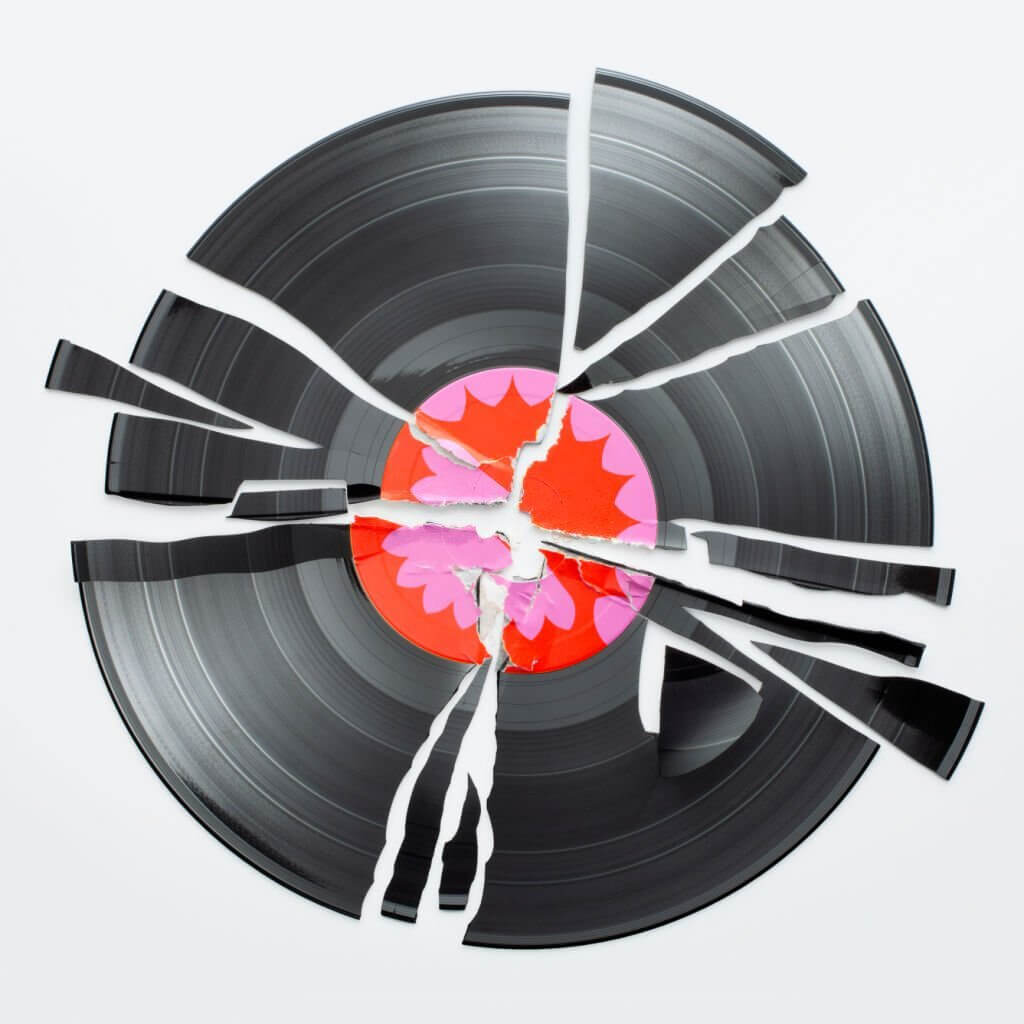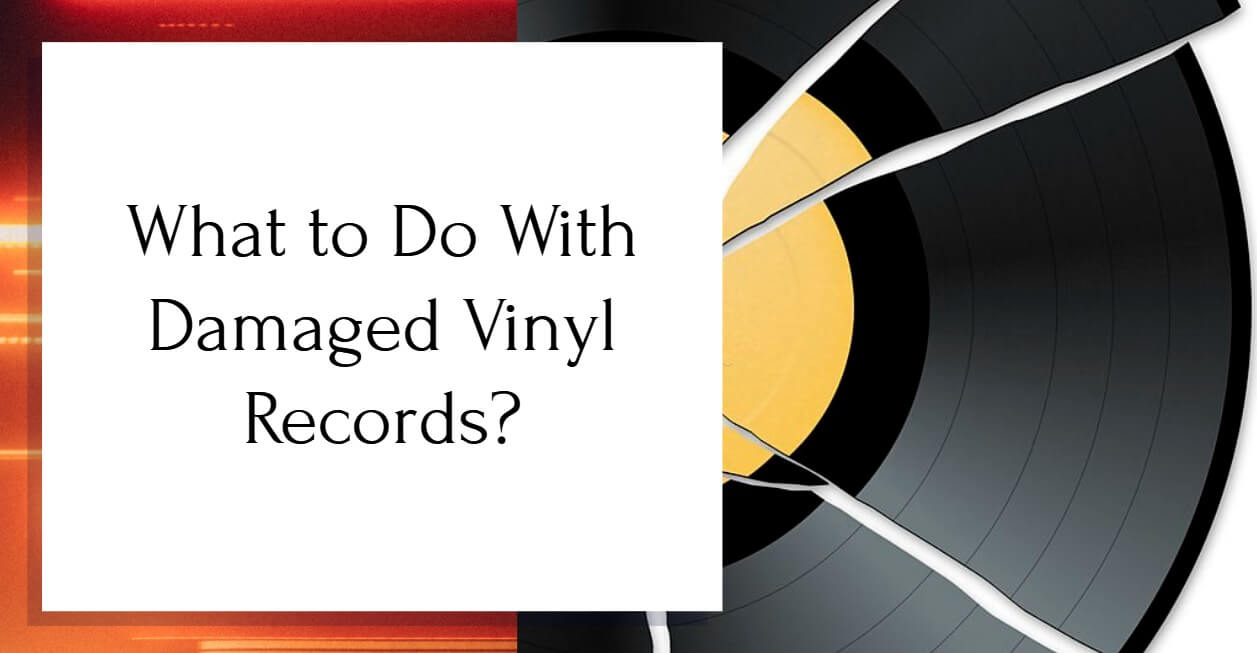As an avid collector of vinyl records, I know the heartbreak of having a beloved member of my record collection get damaged. I can never bring myself to throw them out, and I’m always left wondering what to do with damaged vinyl records.
The first thing you need to think of when a vinyl record is damaged is repairing it. If it’s beyond repair, then you need to get creative and use the damaged records as decoration.
Read on to learn more about how you can repair certain types of vinyl record damage, as well as how you can use vinyl records that are beyond fixing.
Here’s What to Do With Damaged Vinyl Records
If one of your vinyl records has been damaged, there might still be hope for it. Whether this hope is significant or not depends on the type of damage your record has suffered.
There are three main types of damage that can occur in vinyl records: warping, scratches, and cracks.
Although there are ways to repair a scratched or cracked record, you shouldn’t get your hopes up because these methods rarely work. However, warping in a record is definitely reversible.
Getting Creative With Damaged Records

If your vinyl records are beyond repair, don’t throw them out. There are numerous ways you can make use of damaged vinyl records to create all sorts of decorations around your house.
Hang Them on the Wall
A great way to put your damaged records to use is to decorate your walls with them. By hanging some vintage records on your walls, you’ll give your home a sophisticated look that will have your guests stopping in their tracks to explore.
All you’ll need to hang vinyl records on your wall is some mounting tape. Before you hang up your records, make sure to carefully curate their arrangement and colors to get the best results.
Arts and Crafts
The malleable and slim nature of vinyl records makes them incredibly easy to mold into almost any shape you desire. This makes them perfect for crafting unique trinkets to place around your house, giving it a vintage, elegant vibe.
Here are some great ideas for things to make using your damaged records:
- Bowls
- Wine racks
- Chunky necklaces
- Plant pots
- Sculptures
- Earrings
- Custom clocks
- Coasters
- Bird feeders
- Pencil cups
Must Read: How Much Is an Antique Record Player Cabinet Worth?
How to Restore a Warped Vinyl Record
Follow these step-by-step instructions to fix your warped record by flattening it using heavy objects:
1. Thoroughly Clean the Record
The first step is to make sure your record is completely clean. You can do so by carefully wiping it with a microfiber cloth.
The objective of this step is to avoid any lingering dirt further damaging the record when you’re flattening it.
2. Cushion the Record Properly
The next thing you’ll need to do is make sure your record is sufficiently cushioned. You can do so by encasing it inside a microfiber protective sleeve and placing it inside its outer sleeve.
This step is very important because it prevents the shape of your record’s grooves from being altered during the flattening process.
3. Flatten the Record
The final step is to sandwich your record between a couple of heavy books with flat covers. You should leave your record in this position for a few days.
After you remove it, you’ll find that it’s back to its original shape.
How to Avoid Damaging Your Vinyl Records
Although there are a lot of ways you can use damaged vinyl records, chances are that you don’t want them to get damaged in the first place. You want to enjoy the beautiful music they have to offer.
Here are some useful tips to follow in order to avoid damaging your vinyl records:
How to Avoid Warping
Vinyl records will warp when excessively exposed to certain elements. These elements include high temperatures, direct sunlight, and pressure.
Store At a Safe Temperature
Vinyl records will warp at 140℉, so you should always make sure to store your records at a temperature no higher than 70℉ to completely eliminate the risk of warping.
Avoid Direct Sunlight
The PVC that makes up over 90% of your vinyl records is highly sensitive to sunlight. Over-exposure to sunlight causes this material to go soft and, in turn, compromises the structural integrity of your records.
Make sure to store your records in a dark room. Also, you should never keep your records in the car for an extended period of time.
Stack Vertically
The way you stack your records is also very important in reducing the risk of warping. You should always stack your records side-to-side in an upright position, avoiding having them slanting as much as possible.
Stacking your records on top of each other is a recipe for disaster. This is because the records on the bottom of the stack are exposed to too much pressure from the weight on top of them.
How to Avoid Scratches
When a record gets scratched, there’s virtually nothing you can do to fix it. Here’s what you should do to avoid it happening in the first place.
Handle Your Records Carefully
When handling your records, you should never touch their surface. Even the slightest dirt from your fingers can get wedged into a record’s grooves, significantly increasing the risk of scratching. The only area of your record you should be touching is its outer edge.
Another thing you must never do is take a record off your record player while it’s still spinning. If you do so, you put your record at risk of severe damage.
Remove Records From Sleeve the Right Way
When removing your record from its sleeve, you should do so while it’s still inside its inner protective sleeve. This reduces the chances of the record getting scratched due to abrasion against the outer sleeve as you take it out.
Additionally, you should never drop your record into its sleeve when putting it back in. Carefully lowering your record into its sleeve is the best course of action.


